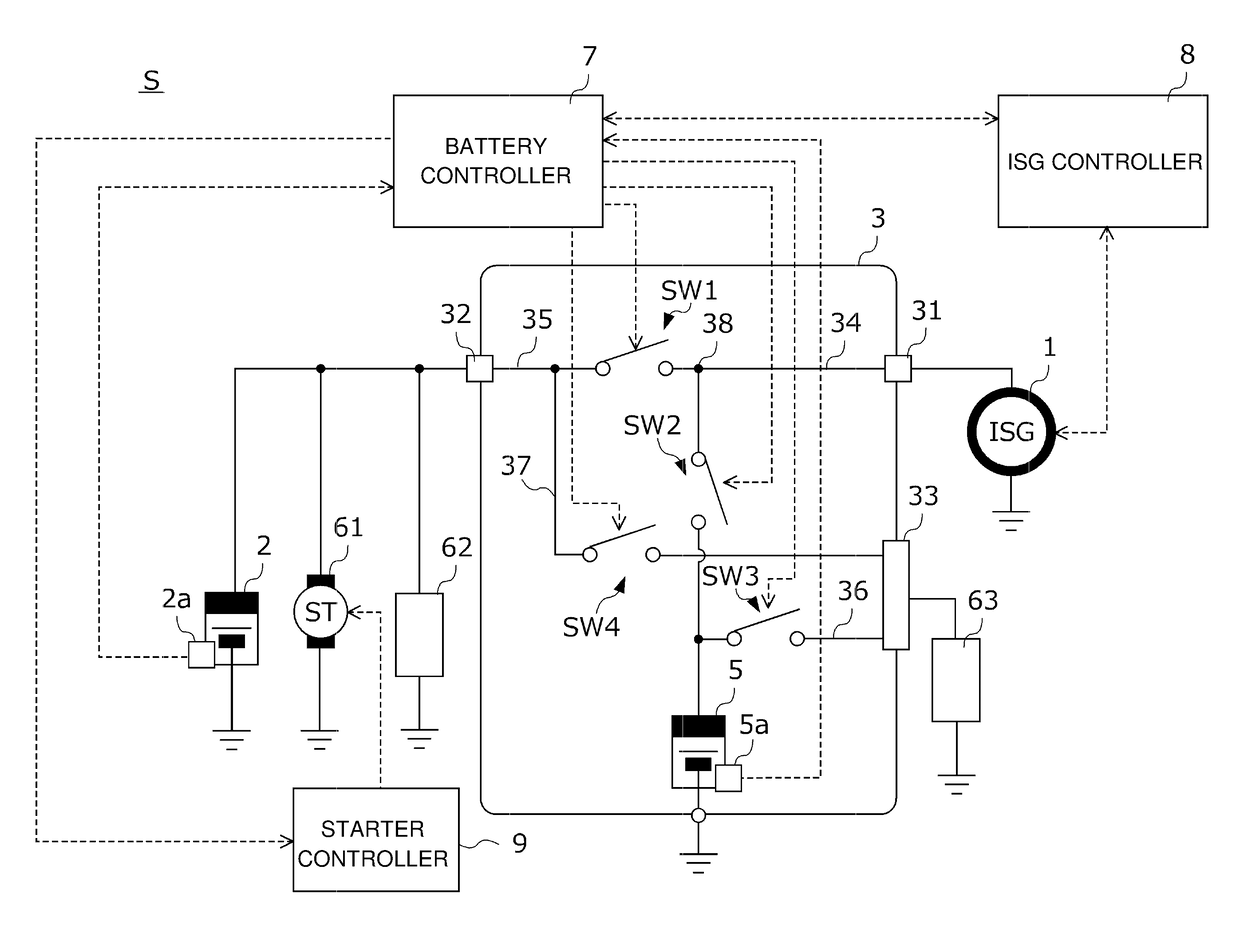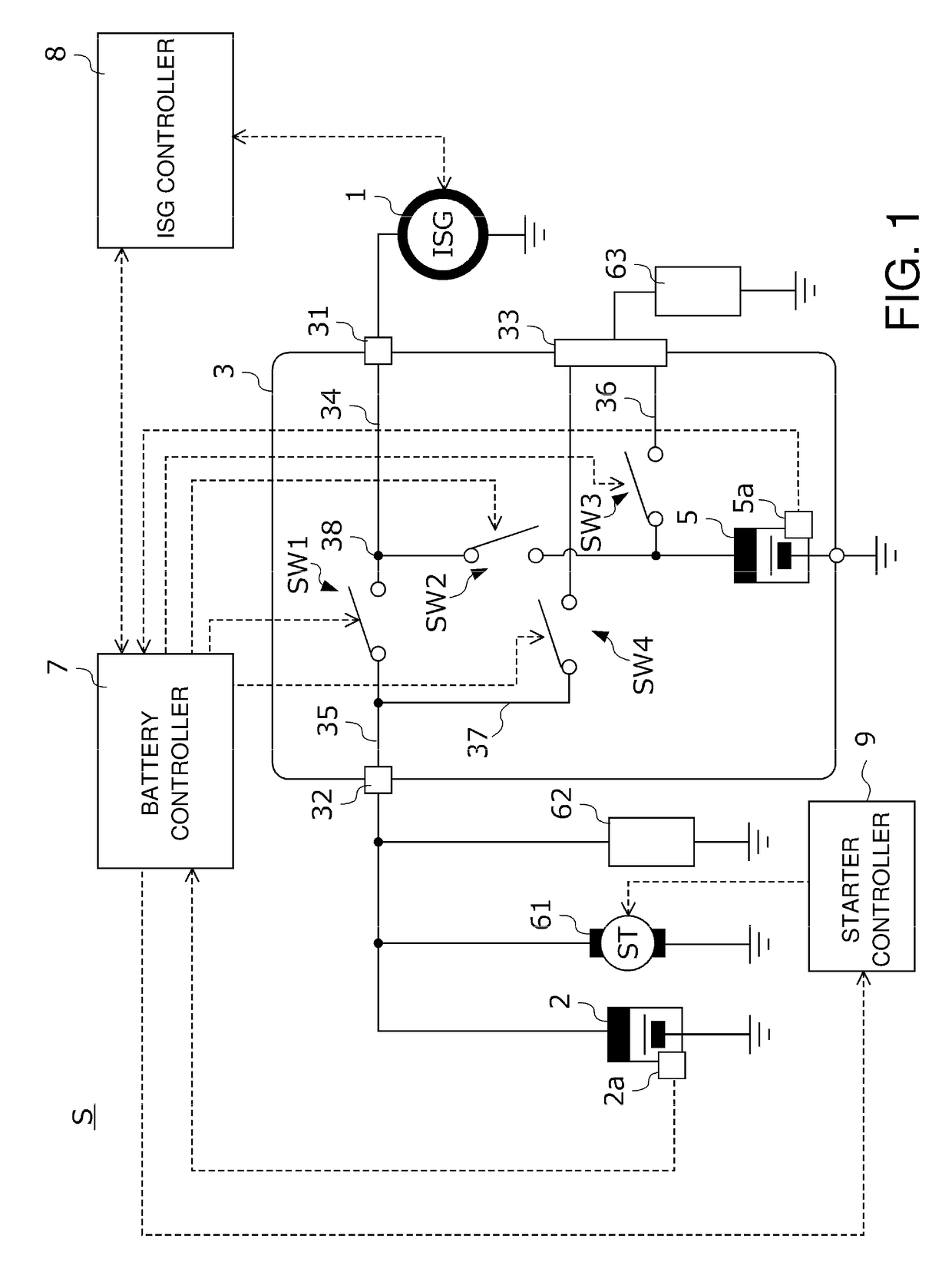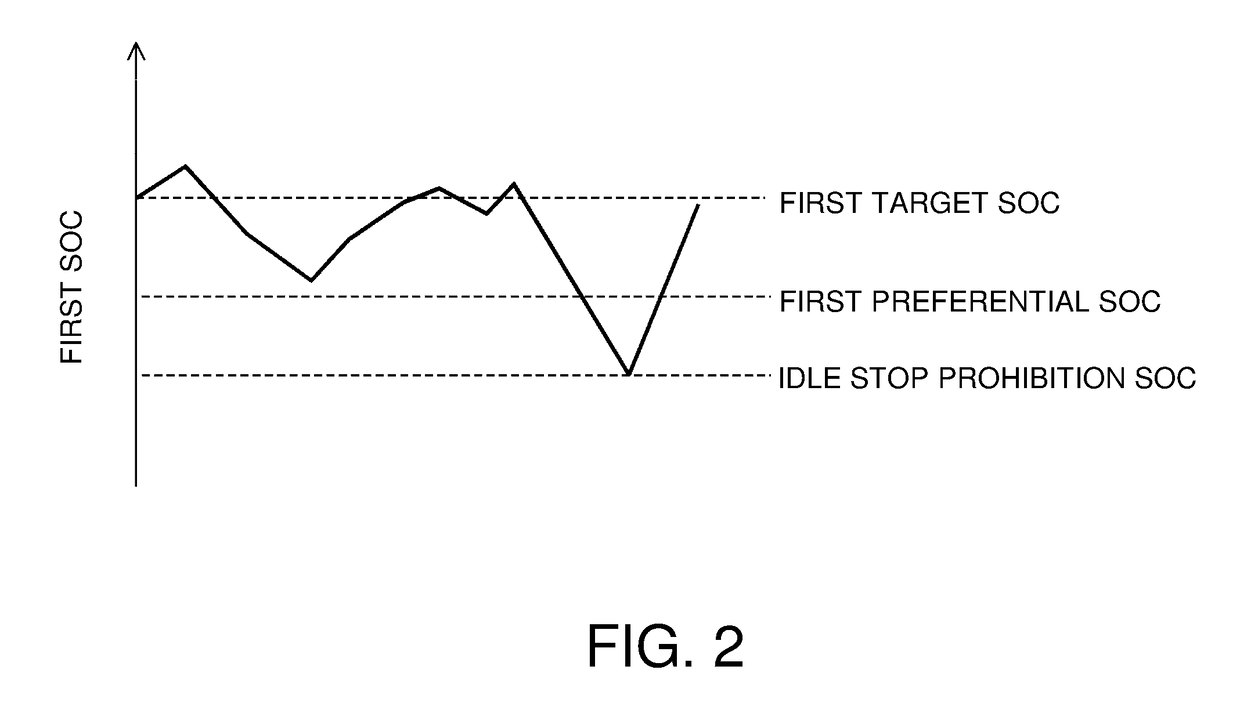Power supply system for vehicle
a power supply system and vehicle technology, applied in hybrid vehicles, battery/fuel cell control arrangements, transportation and packaging, etc., can solve the problems of reducing the fuel efficiency of the vehicle as a whole, the battery performance of the lithium-ion storage battery having a high regeneration capability will not be satisfactorily used, and the potential of the lithium-ion storage battery with a lower potential will not be sufficiently charged
- Summary
- Abstract
- Description
- Claims
- Application Information
AI Technical Summary
Benefits of technology
Problems solved by technology
Method used
Image
Examples
first embodiment
[0030]Hereinafter, a first embodiment of the invention will be described with reference to the accompanying drawings.
[0031]FIG. 1 is a diagram illustrating a configuration of a power supply system S according to this embodiment. The power supply system S is for a vehicle and is mounted in a vehicle which is not illustrated and which includes an engine as a power train. The power supply system S supplies power to various electric loads mounted in the vehicle or is charged with power which is generated using a power generator mounted in the vehicle.
[0032]The power supply system S includes a motor generator 1 serving as a power generator, a first battery 2 serving as a first power storage device, a battery module 3 including a second battery 5 serving as a second power storage device, and a battery controller 7 that controls the battery module 3.
[0033]The motor generator 1 is connected to a crank shaft of an engine which is not illustrated via a power transmission mechanism such as a b...
second embodiment
[0081]A second embodiment of the invention will be described below with reference to the accompanying drawings.
[0082]FIG. 5 is a flowchart illustrating a specific process flow of switch control in a power supply system according to this embodiment. The power supply system according to this embodiment is different from the power supply system according to the first embodiment, in that a voltage sensor that detects the voltage of the junction is additionally provided and a part of the specific process flow of the switch control is modified, and both are the same in the other configurations. The processes of S31 and S36 to S42 among the processes of S31 to S41 illustrated in FIG. 5 are the same as the processes of S11 and S15 to S21 illustrated in FIG. 4 and thus detailed description thereof will not be repeated.
[0083]When the determination result of S31 is YES, that is, when the simultaneous charging of the first and second batteries is currently performed, the battery controller acqu...
third embodiment
[0089]A third embodiment of the invention will be described below with reference to the accompanying drawings.
[0090]FIG. 6 is a flowchart illustrating a specific process flow of charging control the first and second batteries in a power supply system according to this embodiment. The power supply system according to this embodiment is different from the power supply system according to the first embodiment, in that a voltage sensor that detects the voltage of the junction is additionally provided and a part of the specific process flow of the charging control is modified, and both are the same in the other configurations.
[0091]In S51, the battery controller determines whether it is immediately after the regenerative power generation is started. When the determination result of S51 is YES, the battery controller turns on the second switch with the first switch turned off and starts the preferential charging of the second battery (see S52).
[0092]In the power supply system according to...
PUM
 Login to View More
Login to View More Abstract
Description
Claims
Application Information
 Login to View More
Login to View More - R&D
- Intellectual Property
- Life Sciences
- Materials
- Tech Scout
- Unparalleled Data Quality
- Higher Quality Content
- 60% Fewer Hallucinations
Browse by: Latest US Patents, China's latest patents, Technical Efficacy Thesaurus, Application Domain, Technology Topic, Popular Technical Reports.
© 2025 PatSnap. All rights reserved.Legal|Privacy policy|Modern Slavery Act Transparency Statement|Sitemap|About US| Contact US: help@patsnap.com



